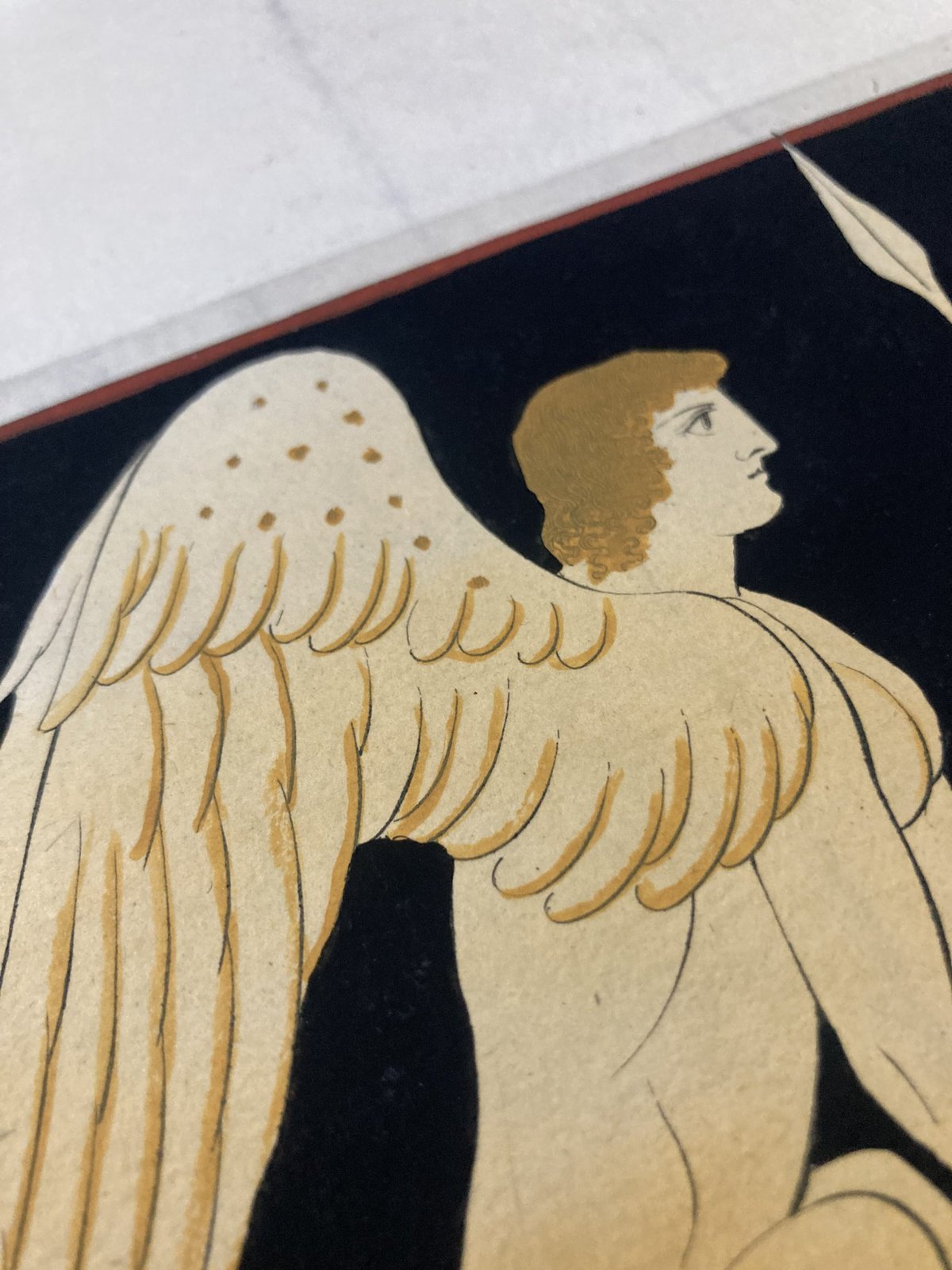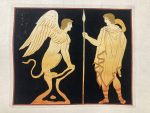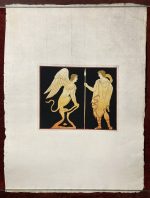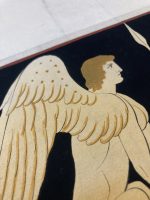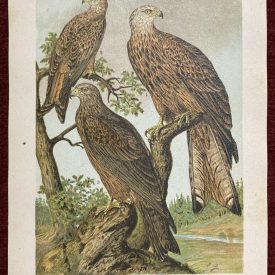Antique Aquatint Print of Hamilton’s Grecian Vase Depicting Oedipus
Hand-colored engraving by Johann Heinrich Wilhelm Tischbein, depicting antique vases from Sir William Hamilton’s collection.
The complete title of the work: “Collection Of Engravings From Ancient Vases Of Greek Workmanship: Discoverd In Sepulchres In The Kingdom Of The Two Sicilies But Chiefly In The Neighbourhood Of Naples During The Course Of The Years MDCCLXXXIX and MDCCLXXXX Now In The Possession Of Sir Wm. Hamilton, His Britannic Maiesty’s Envoy Extry. And Plenipotentiary At The Court Of Naples.”
***
Vol. 2. Plate 24. depicts the story of Oedipus, whose tragic fate was predicted by the Oracle. The Oracle foretold that Lai, the King of Thebes, would meet his death at the hands of his own son. In an effort to prevent this tragedy, the Prince ordered for the infant son born to his wife Jocasta to be exposed. The baby was found and taken in by Peribaea, the wife of Polybus, the King of Corinth, who raised him with love and care. As he grew older, Oedipus became curious about his origins and sought answers from the Oracle at Delphos. The Oracle’s response was that he would end up killing his father and marrying his own mother. To avoid this fate, Oedipus fled Corinth and encountered Laius on the road to Delphos, leading to a fatal quarrel in which Oedipus killed both Laius and his charioteer. He then continued on to Thebes, arriving just as the city was being terrorized by a monster called the Sphinx. The Sphinx, with the body of a lion and the head and breasts of a young girl, posed an enigma to all who passed by. Those who could not solve the riddle were killed, and the son of Jocasta’s brother Creon was among the victims. To save the city, Creon offered the throne and the hand of Jocasta to whoever could defeat the Sphinx. Oedipus fought and defeated the Sphinx, solving the riddle and causing the creature to throw herself off a rock in shame. This Plate portrays Oedipus standing before the Sphinx in his quest to save Thebes.
***
Artist: Johann Heinrich Wilhelm Tischbein
Technique: Hand-colored aquatint engraving
Year: [1791]
***
Dimensions: 53 x 39 (plate); 23 x 19 cm (print)
Condition: Uncut, light staining around the edges, in excellent condition overall.
***
Note: This item will be shipped in a cardboard tube.






